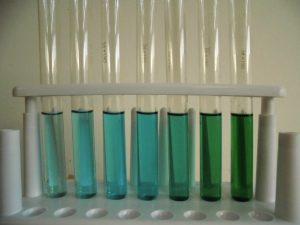March 2009. Police departments across Europe have been searching for a serial killer known as the Phantom of Heilbronn. Her DNA had been found at crime scenes all over the subcontinent. Other than the DNA, police had no other clues to her identity. Finally, a break, but not exactly what authorities were looking for. They had found an individual with matching DNA, only it was a man. Stumped as to how their profile was matching to a man – a genetic impossibility – investigators re-examined the evidence. They eventually determined that the Phantom of Heilbronn was just that, a phantom. The DNA belonged to a worker in the factory that manufactured the cotton swabs used by the forensic officers. The swabs had contained minor contamination from the worker, but had been used to collect samples at crime scenes. When analyzing the swabs, investigators found the DNA profile of the worker, instead of that of the culprit.
Every cell with a nucleus contains molecules of DNA, which function as the blueprint of life. Cells read the code in DNA and use it to construct and operate the body of the organism. Humans share 99.9% of their DNA sequence, but there is variation in the code. Modern technology can read an entire DNA sequence and isolate the parts in which there is known to be variation, known as loci. The variation at all loci produces a DNA profile that is as unique to an individual as a fingerprint. Forensic analysts working with police departments then use this to match a suspect’s DNA to that found as evidence at a crime scene.

How DNA analysis works. Source: The National Forensic Science Technology Center (NFSTC)
Media and popular culture would have you believe that DNA fingerprinting technology is infallible. As the case of the Phantom demonstrates, it most certainly is not. Since with modern technology DNA can be extracted from only a few cells, post-crime contamination during crime scene handling is becoming increasingly problematic. Cells from anywhere or anyone can end up on pieces of vital evidence and be misidentified as the cells of the criminal. Sometimes, as in the case of the phantom, this wastes valuable time and resources. Other times, such as in the controversial Amanda Knox case, it can land the wrong person in jail.

Crime scenes are at high risk of DNA contamination Source: Wikimedia commons, By Tex Texin from Blogosphere, Cyberspace – “Crime Scene Do Not Cross” tape, CC BY 2.0
Crime scene contamination, along with other ways DNA evidence can be corrupted, cast doubt on the perceived faultless technique of DNA fingerprinting. Sometimes, even if with a DNA match cannot prove guilt beyond a reasonable doubt.
Megan Wolf



